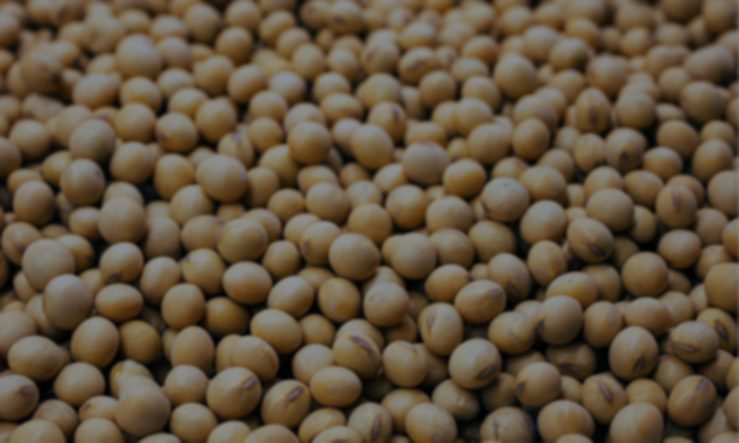Carbon Farming: U.S. Soy Can Play Critical Role Reducing Greenhouse Gas Emissions
By Julie Deering
“Sowing seeds and reaping a harvest.” This is the traditional view of farming, but there’s so much more that farmers do. “Sometimes people think agriculture is sort of an old-fashioned business that doesn’t change much,” said Jim Sutter, CEO of the U.S. Soybean Export Council. “That couldn’t be further from the truth. There’s always something new coming in agriculture.”
Carbon farming is one of those things. Programs are underway and being developed to incentivize those who are not there yet, and reward those who are, for best practices to sequester carbon dioxide in the soil. It’s recognizing agriculture’s ability to offset greenhouse gas emissions.
“Regenerative farming has the potential to store around 5 gigatons of carbon per year into the soil,” said Rabobank Executive Board Member Berry Marttin. “These are not production emissions. This is the sequestration of carbon that was already emitted. That’s a service. Others have emitted the CO2, and farmers are doing a service to capture it again.”
This was part of the conversation during a recent Soy Suite, where Sutter spoke with Marttin on wide-ranging issues that probed evolving consumer demands, environmental conditions and the business landscape.
One of the questions that came up: why is it necessary to have a system that incentivizes farmers for their efforts to capture and reduce greenhouse gas emissions?
The agricultural community must increase production to feed the growing global population on less land and with fewer resources while remaining a part of the climate solution. U.S. soybean farmers help contribute to climate goals by using climate-smart agriculture to offset greenhouse gas emissions.
“We have to go back to the basics,” said Marttin. “In the Paris Climate Agreement everybody suddenly woke up to food production. Actually, food production emits about a quarter of all greenhouse gas emissions. If we want to feed everybody sustainably, we need to tackle this, and we can.”
Marttin said six of the 12 gigatons of emissions (from food production) are contributed by the conversion of land to new uses. An additional six gigatons are from actual food production. Another two gigatons comprise food waste.
Sustainable agricultural practices include nutrient management, no-till or conservation tillage, the use of precision or digital agriculture, integrated pest management, buffer practices, and plant breeding innovation and biotechnology.
For farmers who adopt best practices to trap carbon, Marttin said they should be paid for the service.
“From the options we have, the sequestration of carbon to the land by no-tilling, crop rotation or other techniques, agriculture is the cheapest,” said Marttin. “The next alternative is $300 to $400 per ton. Farmers can capture carbon for $10-$50 per ton, and farmers should be paid for it.”
Marttin added that farmers can capture one to two tons of carbon per acre annually, and cumulatively store 10-20 tons of carbon.
This not only benefits the environment, but it also creates new cash flow opportunities for farmers.
Rabobank recently pioneered a Carbon Bank to restore soils, generate additional revenue for farmers and enable corporations to invest in nature-based solutions to decarbonize supply chains. Rabo Carbon Bank pilots propositions that reduce emissions and remove carbon from the atmosphere while providing an additional revenue stream or other financial incentives for farmers.
The initiative connects farmers with organizations seeking to meet net-zero commitments and offset unavoidable emissions. Marttin said Rabobank is committed to making a difference as a cooperative, customer-driven financier. It aims to be a socially responsible bank, championing customer issues that have a major impact on society.
“By changing some of our practices and thinking different about farming, it’s very easy to get to net zero,” he added. “We as an industry can actually be positive in relation to the challenges we have as humanity on our planet. It’s about changing habits.”
U.S. Soy supports independent, third-party efforts to develop carbon sequestration incentives, as well as continuous improvement in sustainable farming practices.
U.S. Soy is verified sustainable through the U.S. Soy Sustainability Assurance Protocol (SSAP), a certified aggregate approach audited by third parties that verifies sustainable soybean production at a national scale. And by the year 2025, U.S. soybean farmers aim to:
- Reduce land impact by 10%.
- Reduce soil erosion by an additional 25%.
- Increase energy efficiency by 10% of BTUs used per ton.
- Reduce total greenhouse gas emissions by 10%.
To learn more, go to www.ussoy.org/channel/sustainability. Watch Marttin and Sutter’s full Soy Suite conversation on the U.S. Soy YouTube page.
